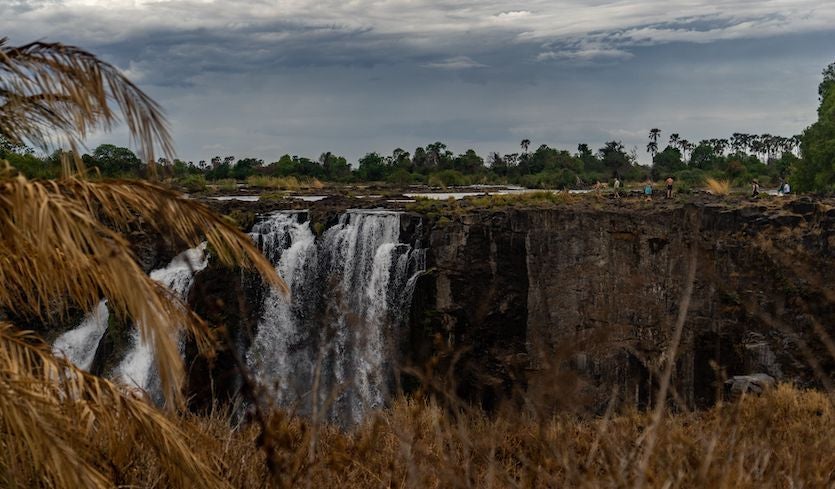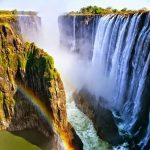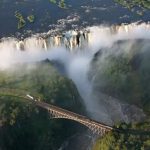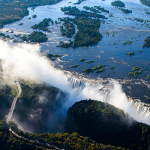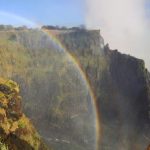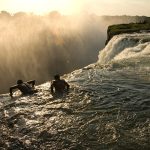You’ve decided to embark on a journey to Victoria Falls, one of the most majestic and awe-inspiring waterfalls in the world. But before you pack your bags and start booking your tickets, it’s essential to understand the climate you’ll be encountering. The climate of Victoria Falls is unique, with distinct seasons that can greatly impact your experience. From the thunderous roar of the falls during the wet season to the stunningly low water levels in the dry season, get ready to be captivated by nature’s grand display at Victoria Falls.

1. Average Temperature
a. Seasonal Variations
Victoria Falls, located in southern Africa, experiences distinct seasonal variations in temperature throughout the year. The region has a tropical climate, so the temperatures remain fairly warm throughout the year. However, there are noticeable differences between the dry and wet seasons.
During the dry season, which occurs from May to September, the temperatures in Victoria Falls tend to be cooler. The average daily temperature ranges from 15°C to 25°C (59°F to 77°F), with slightly cooler temperatures in the evenings and early mornings. This is considered the peak tourist season as the weather is comfortable, and there is minimal rainfall during this period.
On the other hand, the wet season, which occurs from October to April, brings higher temperatures to Victoria Falls. The average daily temperature ranges from 20°C to 35°C (68°F to 95°F), with higher levels of humidity. The days can be hot and humid, especially during the peak of summer. It’s advisable to dress lightly and carry sunscreen to protect yourself from the scorching sun.
b. Daily Variations
In addition to the seasonal variations, Victoria Falls also experiences daily fluctuations in temperature. The temperatures can vary significantly between the day and night, especially during the dry season.
During the dry season, the temperature can drop quite significantly at night, with lows reaching around 10°C (50°F). It’s important to carry a light jacket or sweater with you when venturing out in the evenings to keep warm.
In contrast, during the wet season, the temperatures remain relatively warm even at night, with lows rarely dropping below 20°C (68°F). The high levels of humidity contribute to the warm nights, providing a more tropical atmosphere.
2. Rainfall
a. Rainy Season
The rainy season in Victoria Falls stretches from October to April, coinciding with the warmer summer months. During this time, the region experiences frequent rainfall, often in the form of heavy thunderstorms and downpours. The rainfall brings life to the surrounding vegetation and fills the Zambezi River, adding to the grandeur of the Falls.
The showers are typically short-lived but intense, providing relief from the scorching temperatures and transforming the landscape into a lush, vibrant green paradise. It’s advisable to carry an umbrella or raincoat during this season to stay dry during sudden showers.
b. Dry Season
The dry season, which occurs from May to September, is characterized by minimal rainfall in Victoria Falls. This period is ideal for outdoor activities as the chances of encountering rain are significantly lower. The skies remain clear, and the dry weather allows for unobstructed views of the Falls and the surrounding landscapes.
The absence of rainfall during the dry season also means that the water levels in the Zambezi River and the Falls themselves are lower. The reduced water flow creates a different experience for visitors, as the rocky formations and gorges become more visible.
c. Rainfall Amounts
Victoria Falls receives an average annual rainfall of approximately 1,200 millimeters (47 inches), with the majority of the rainfall occurring during the wet season. The exact amount of rainfall can vary from year to year, influencing the overall flow of the Falls and the surrounding environment.
The highest rainfall is generally observed in the months of January and February, with an average monthly rainfall of around 200 millimeters (8 inches), while the lowest rainfall occurs between June and August, with an average monthly rainfall of around 10 millimeters (0.4 inches). These variations in rainfall contribute to the unique beauty and ever-changing nature of Victoria Falls.
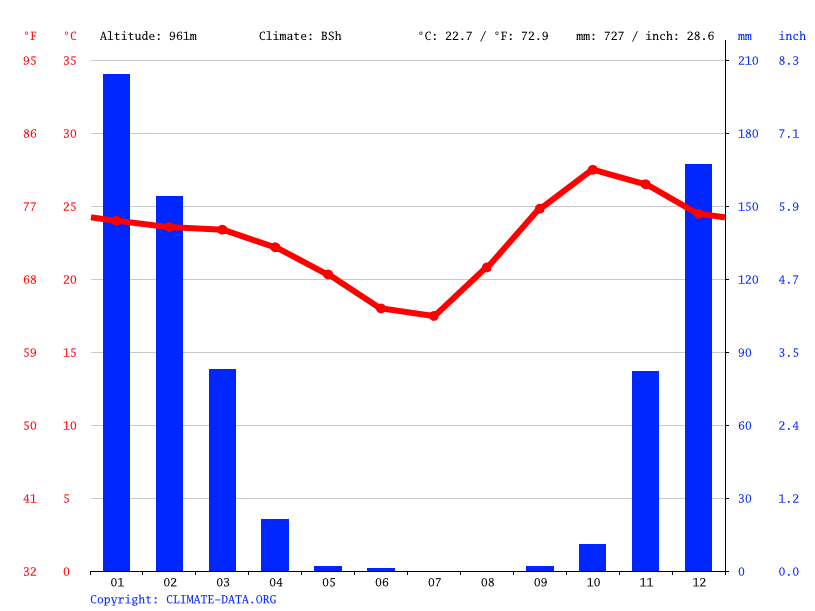
3. Humidity Levels
Due to its proximity to the Zambezi River and the surrounding tropical vegetation, Victoria Falls experiences relatively high levels of humidity throughout the year. The humidity levels tend to be particularly high during the wet season when the combination of rainfall and warm temperatures creates a humid and tropical atmosphere.
The humidity can make the air feel heavy and can also contribute to a clammy sensation on the skin. It’s important to stay hydrated and wear breathable clothing during your visit to Victoria Falls, especially during the wet season, to ensure your comfort.
4. Wind Patterns
a. Trade Winds
Victoria Falls benefits from the trade winds that blow across southern Africa. These winds, known as the easterly trade winds, are prevalent during the dry season. They bring cool air from the east, providing relief from the heat and humidity. The trade winds also contribute to clear skies and pleasant weather conditions, making it an ideal time to visit the Falls.
b. Prevailing Winds
During the wet season, the prevailing winds in Victoria Falls tend to blow from the southwest. These winds bring in moisture from the Indian Ocean and can sometimes intensify the rainfall and thunderstorms in the region. It’s important to be prepared for gusty winds and occasional heavy rainfall if visiting during this time of the year.
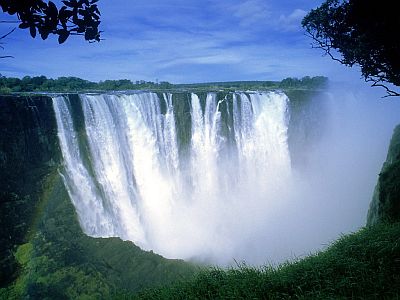
5. Sunshine Hours
a. Seasonal Variations
Victoria Falls enjoys a generous amount of sunshine throughout the year, although there are notable variations in the number of sunshine hours between the dry and wet seasons.
During the dry season, the skies remain clear, and sunny days are the norm. Visitors can expect an average of 8 to 10 hours of sunshine per day, making it an ideal time for outdoor activities and sightseeing.
In contrast, the wet season experiences more cloud cover, reducing the number of sunshine hours. However, even during this time, sunny periods can occur, especially in the mornings and early afternoons. It’s advisable to plan your activities accordingly and make the most of the available sunshine during the wet season.
b. Daily Variations
In addition to the seasonal variations, there are also daily fluctuations in the amount of sunshine that Victoria Falls receives, particularly during the wet season.
During the wet season, the mornings often start with clearer skies and more sunshine, gradually giving way to clouds and a potential increase in rainfall as the day progresses. To make the most of the sunshine, it’s advisable to plan outdoor activities for the earlier part of the day.
6. Fog and Mist
The immense power and volume of water at Victoria Falls generate an impressive amount of fog and mist that can be seen from a distance. The mist rises high into the air, creating a unique microclimate around the Falls. The mist can be visible even several kilometers away, making for a breathtaking sight.
The mist created by the Falls is more prevalent during the wet season when the water flow is at its peak. It adds to the overall ambiance of the Falls, creating a dream-like atmosphere. There are designated viewpoints and walkways that allow visitors to get up close to the mist and experience the Falls from a different perspective.
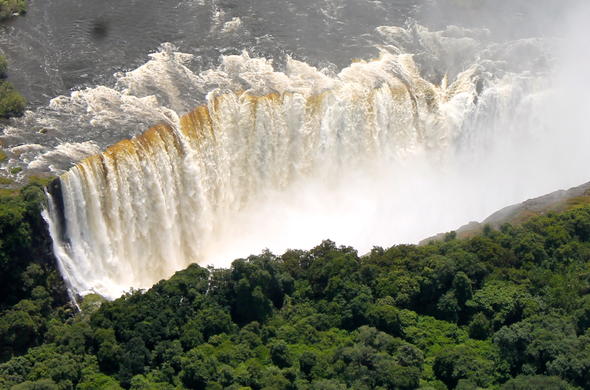
7. Climate Change
a. Impact on Victoria Falls
Climate change poses a significant threat to Victoria Falls and its surrounding ecosystem. Rising global temperatures and changing weather patterns have the potential to alter the flow of the Zambezi River, impacting the volume of water that cascades over the Falls.
There have already been instances of reduced water flow during drought periods, affecting the visual spectacle and overall visitor experience. If global warming continues unchecked, it could further impact the delicate balance of the ecosystem, leading to potential long-term changes in the vegetation, wildlife, and hydrology of the area.
b. Mitigation Efforts
Efforts are underway to mitigate the impact of climate change on Victoria Falls. Conservation organizations and local authorities have implemented measures to raise awareness about the importance of environmental stewardship and sustainable practices.
One notable action is promoting responsible tourism practices that minimize the carbon footprint and environmental impact of visitors. This includes initiatives such as waste management, energy conservation, and supporting local communities through eco-tourism initiatives.
By prioritizing sustainability and advocating for climate action, it is hoped that Victoria Falls and its unique ecosystem can be preserved for future generations to enjoy.
8. Climate-related Activities
a. Safari Tours
Victoria Falls is not only known for its magnificent waterfall but also for its diverse ecosystem and rich wildlife. The climate plays a crucial role in shaping the environment and determining the best time for safari tours.
During the dry season, when the vegetation is less dense and water sources become scarce, wildlife tends to congregate near the remaining waterholes, making it an excellent time for game drives and safari tours. The clear weather also provides excellent visibility for spotting animals from a distance.
b. Helicopter Rides
To fully appreciate the majesty of Victoria Falls from an aerial perspective, helicopter rides are a popular activity among visitors. The climate greatly influences the experience of these rides.
During the wet season, when the water flow is at its peak, the Falls emit an incredible amount of mist and spray, creating a mesmerizing sight from the air. The helicopters soar above the Falls, providing panoramic views of the cascading water and the surrounding landscapes. These flights are dependent on weather conditions, so it’s advisable to check with tour operators and take advantage of clear weather for an unforgettable experience.
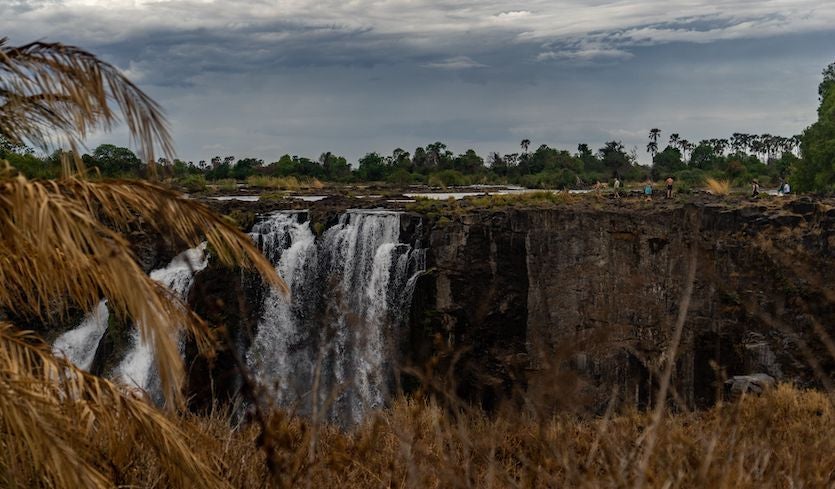
9. Best Time to Visit
a. Viewing the Falls
To fully appreciate the beauty and power of Victoria Falls, the best time to visit is during the wet season, from November to April. The increased water flow during this period creates a dramatic spectacle, with the Falls roaring and the mist creating a mesmerizing ambiance.
However, for those who prefer a different perspective and a drier experience, the dry season, from May to September, offers clear skies and unobstructed views of the rocky formations and gorges. The reduced water flow during this time allows for a more detailed exploration of the geological features of the Falls.
b. Outdoor Activities
The best time to partake in outdoor activities, such as safari tours and helicopter rides, largely depends on personal preferences and the desired experiences.
For wildlife enthusiasts, the dry season is ideal, as the animals gather near the water sources, offering excellent opportunities for sightings. The clear weather and comfortable temperatures also make it an enjoyable time for outdoor adventures.
Alternatively, if experiencing the full force of the waterfall and embracing the tropical atmosphere is a priority, the wet season provides a more immersive experience. The lush vegetation, the thundering water, and the vibrant colors make for an unforgettable adventure.
10. Climate Adaptation Strategies
a. Tourism Sector
The tourism sector in Victoria Falls has recognized the importance of climate adaptation strategies to ensure the long-term sustainability of the destination.
Tour operators have introduced eco-friendly practices, such as reducing waste, conserving water and energy, and supporting local initiatives that promote environmental conservation. The implementation of these strategies not only minimizes the impact of tourism on the climate but also provides an opportunity for visitors to learn about sustainable practices and contribute to the preservation of the region.
b. Local Communities
Local communities surrounding Victoria Falls are also actively engaging in climate adaptation strategies to protect their livelihoods and natural resources.
By diversifying their income sources and embracing sustainable agriculture and eco-tourism initiatives, residents are adapting to the changing climate and preserving their way of life. These community-driven efforts not only contribute to the sustainability of the region but also enhance the overall visitor experience by offering authentic cultural interactions and opportunities to support local businesses.
In conclusion, the climate of Victoria Falls is characterized by seasonal temperature variations, distinct wet and dry seasons, humidity, wind patterns, sunshine hours, fog, and mist. While climate change poses challenges to the region, efforts are underway to mitigate its impact. Visitors can partake in various climate-related activities and choose the best time to visit based on their preferences. By embracing sustainability and supporting local communities, the tourism sector and local residents are adapting to the changing climate and ensuring the long-term preservation of Victoria Falls.

